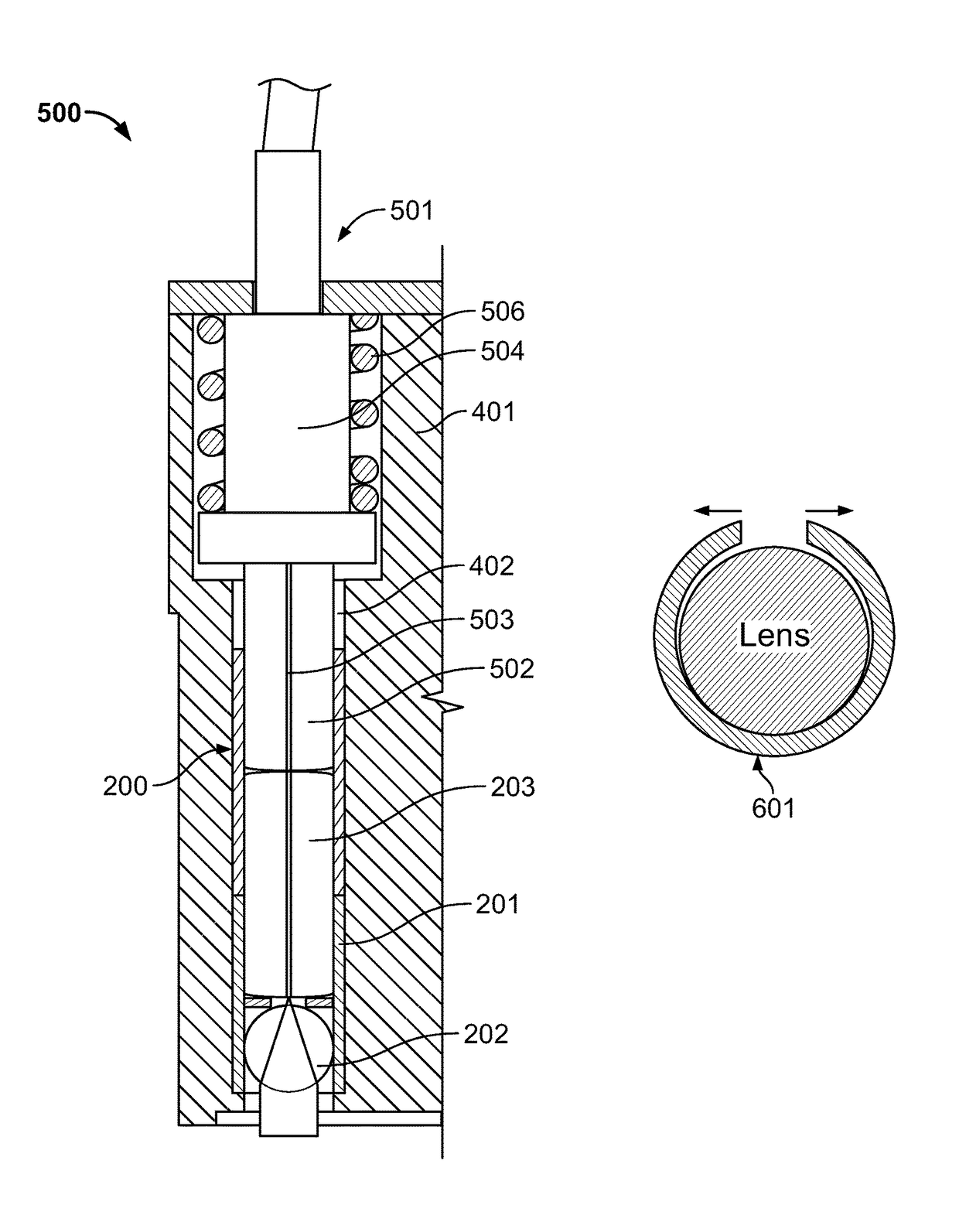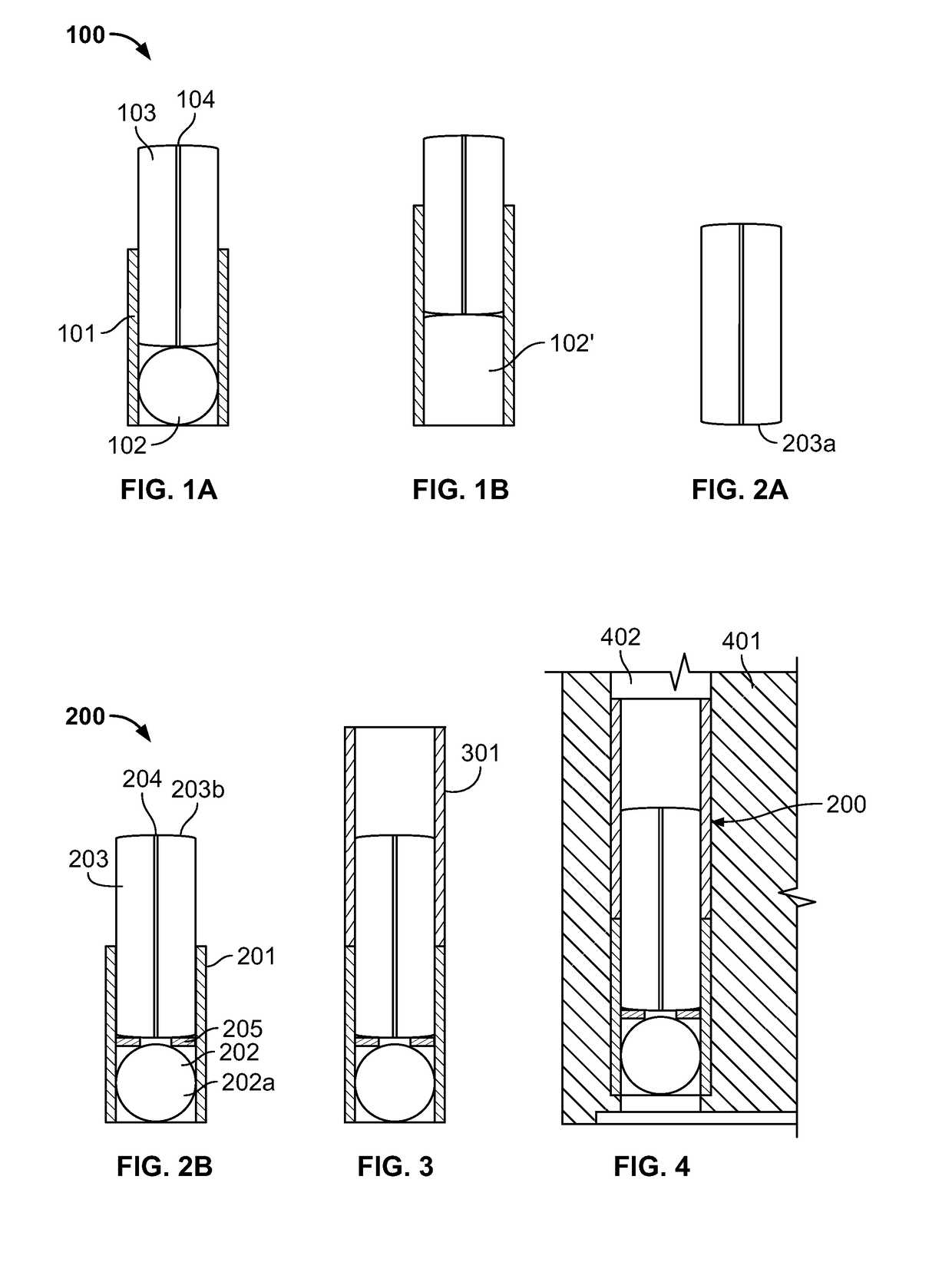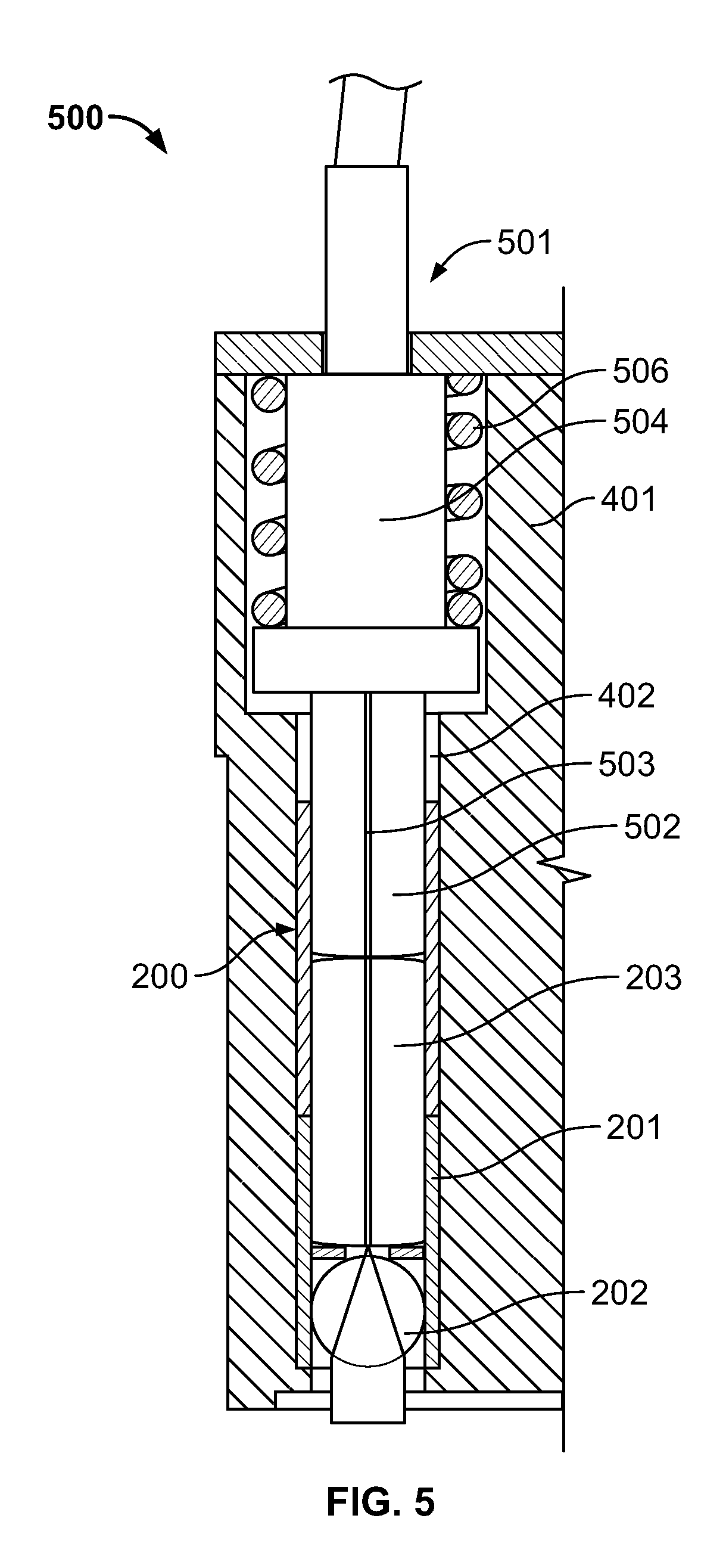Expanded beam connector with discrete alignment assembly
a technology of optical connectors and alignment assemblies, applied in the field of optical connectors, can solve the problems of difficult physical contact between the fiber and the light path of the mating connector, profoundly detrimental effect on the optical transmission, and the inability to precisely machine the inserts, etc., to facilitate the critical alignment of the lens and the fiber, and facilitate the manufacturing process. the effect of simple structur
- Summary
- Abstract
- Description
- Claims
- Application Information
AI Technical Summary
Benefits of technology
Problems solved by technology
Method used
Image
Examples
Embodiment Construction
[0030]Referring to FIGS. 1(a)&1(b) and FIGS. 10(a) and (b) embodiments are shown of an alignment assembly 100, 1000 for insertion into an insert of an expanded beam connector. As used herein the term “connector” refers to any device used to join a segment of the conductor to (1) another conductor segment, (2) an active device such as a photonic radiation source, detector, or repeater, and (3) a passive device, such as switch, multiplexer, or attenuator. A typical optical fiber connector comprises housing and a cable assembly within the housing. The cable assembly comprises a ferrule, which has one or more bore holes to accommodate fibers, and a fiber secured in each bore hole such that the end of the fiber is presented for optical coupling by the ferrule. The housing is designed to engage a “mating structure” having an optical path to which the fiber optically couples during mating. The mating structure may be another connector or an active or passive device as mentioned above. The ...
PUM
 Login to View More
Login to View More Abstract
Description
Claims
Application Information
 Login to View More
Login to View More - R&D
- Intellectual Property
- Life Sciences
- Materials
- Tech Scout
- Unparalleled Data Quality
- Higher Quality Content
- 60% Fewer Hallucinations
Browse by: Latest US Patents, China's latest patents, Technical Efficacy Thesaurus, Application Domain, Technology Topic, Popular Technical Reports.
© 2025 PatSnap. All rights reserved.Legal|Privacy policy|Modern Slavery Act Transparency Statement|Sitemap|About US| Contact US: help@patsnap.com



